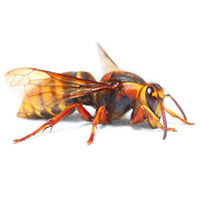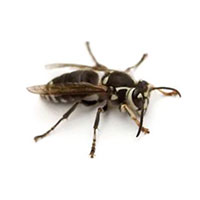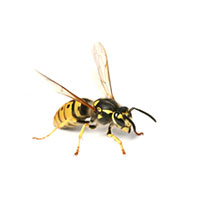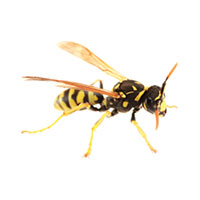European Hornets in Wisconsin
The European hornet, also known as the brown or giant hornet, gets its common name from being introduced to the eastern United States from Europe in the mid-1800s. These hornets are found in 30 states, from the eastern U.S. as far west as Louisiana and the Dakotas. European hornets are much larger than yellowjackets, and unlike most stinging insects, can be active at night. Adults, possibly seeking prey, come to lights in the evening and can be a source of great concern for homeowners.
European Hornet Habitat & Nests
European hornets’ nest in hollow trees, barns, outbuildings, hollow walls of houses, attics, and abandoned beehives. Their nests will rarely appear freely suspended like the football-shaped bald-faced hornet nests. Nests that are not covered by an external structure have a brown paper envelope made of cellulose from decayed wood covering the nest. This feature distinguishes this species from large yellow jackets. Nests that are sheltered have little or no envelope covering their cells. Nests often have a foul odor, and when they are built-in attics, they can extend into living spaces. A mature nest has about 1,000 workers.
European Hornet Behaviors & Dangers
Although large and fierce-looking, European hornets will not sting unless threatened and tend to leave people alone. However, this hornet is capable of stinging multiple times, and those that may be allergic to their venom should seek medical attention when stung. European hornets can cause issues for homeowners by nesting in barns, hollow trees in yards, wall voids, or attics. When food becomes scarce in late summer, they look for sugary foods and may destroy fruit trees. These hornets are attracted to porch lights at night and will sometimes bang up against windows, causing many a distressed homeowner.
If you notice a European hornet problem forming near your Wisconsin property, always contact your local hornet removal company.
Need help with European Hornets?
We'll call you! Leave your information below.





